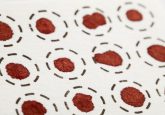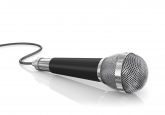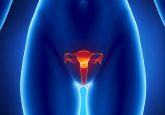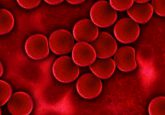Interview with expert panel member Roland Meesters (Universidad de los Andes) on the future of DBS
 Your review article, ’State-of-the-art dried blood spot analysis; an overview of recent advances and future trends’ has recently been featured on Bioanalysis Zone. Please could you briefly describe the main conclusions of your article?
Your review article, ’State-of-the-art dried blood spot analysis; an overview of recent advances and future trends’ has recently been featured on Bioanalysis Zone. Please could you briefly describe the main conclusions of your article?
The popularity of DBS is still growing without a doubt, it can be shown by the ever growing number of scientific publications published nowadays applying the technique. DBS bioanalysis is evolving from a previously time and labor intensive microsampling technique to a sophisticated micro-bioanalysis technique for quantitative, reliable analysis of small or large molecule target analytes in small volumes of whole blood. Although DBS bioanalysis underwent some major analytical improvements and has strongly gained popularity in several life science disciplines in recent years, there are still some analytical hurdles in DBS analysis. Hurdles like hematocrit effect, internal standard addition and dilution integrity in incurred sample reanalysis, which still have to be addressed. The moment these hurdles in DBS analysis will be overcome, DBS will undoubtedly be fully embraced as a high quality and reliable blood microsampling technique in different scientific research areas as well in regulated environments.
At what stage in your career did you first become involved in dried blood spots and what first attracted your attention to this area?
My first involvement in DBS originates from the year 2009. This was in the time that I was working as a senior scientist at the Erasmus University Medical Center in Rotterdam at the Neuro-oncology and Clinical & Cancer proteomics laboratory from Dr. Theo Luider (Department of Neurology), the Netherlands. I had to develop, in collaboration with colleague scientists from the Virology department, a bioanalytical assay to measure in an ultrafast and high-throughput fashion the concentrations of two antiviral protease inhibitors (Lopinavir and Ritonavir) in whole blood samples of HIV-1 infected children. We decided to try DBS in combination with MALDI-QqQ-MS/MS and results were later published in Analytical and Bioanalytical Chemistry. [1]
How has the field evolved since then?
The field of DBS bioanalysis has evolved enormously in the last few years, by introduction of many technological changes. Important technological changes in DBS analysis were for example, introduction of automated online DBS instrumentation, direct analysis of DBS by technologies such as MALDI, DESI, DART and PaperSpray and automated addition of internal standards by TouchSpray as well as microfluidic analysis becoming available to the bioanalytical community.
There is currently much debate about the use of DBS for bioanalytical applications, in your opinion what are the biggest limitations/concerns for the use of DBS?
- A better understanding of the hematocrit-effect and the relationship between DBS target analyte concentrations and plasma concentrations will undoubtedly be beneficial for the DBS applications in pharmaceutical drug development and for gaining full acceptance in regulated environments.
- DBS assays often lack sensitivity and reproducibility compared to equal plasma assays. Development of new DBS substrate materials or improvement of available DBS substrate materials could possibly provide the DBS bioanalysis community in the future with substrate materials for a more sensitive and reliable DBS bioanalysis.
- At the moment, no guidelines on DBS assay development and validation are available. The development and introduction of harmonized guidelines is of high importance to the bioanalytical field for acceptance of DBS as a sampling technique, especially in regulatory environments.
Do you believe it is important to carry out a process comparison with conventional approach when using DBS? If so, what approach do you use?
Personally, I think it is very important to carry out a process comparison (cross-validation) between DBS and conventional types of samples. Data obtained from different methods or from different laboratories that apply the same analytical method should be compared by cross validation procedures when possible. Guidelines for cross validation exist, for example, described in recent EMEA and FDA guideline for bioanalytical method development and validation. The outcome of the cross validation could be critical in determining whether the obtained data are reliable and whether they can be used. When possible I always try to cross validate new DBS assays, but it is not in all cases possible.
What is your prediction for the future of DBS?
Personally, I am very optimistic and expect with confidence that the popularity of DBS will keep increasing over the coming years. Although we still have a long way to go with some analytical hurdles, I think that we are on the right track to get DBS equally accepted as a sampling technique as plasma sampling is in regulatory and non-regulatory bioanalysis. Harmonized guidelines on DBS assay development, validation and collection could be very helpful to achieve this aim.
As you may know, Bioanalysis Zone is going to be carrying out a survey on DBS. How do you think this survey will help the bioanalytical community?
Surveys can be very helpful in gathering information from a group of individuals that for example share the same interests or work in the same field. The information obtained from a survey on DBS could give a clear view on actual hurdles, difficulties but also on new applications or new findings applying DBS. All this information could be of great interest to the DBS community or to those that are considering using DBS in future applications.
References
[1] Meesters RJ, van Kampen JJ, Reedijk ML et al. Ultrafast and high-throughput mass spectrometric assay for therapeutic drug monitoring of antiretroviral drugs in pediatric HIV-1 infection applying dried blood spots. Anal. Bioanal. Chem. 398(1), 319–328 (2010).






